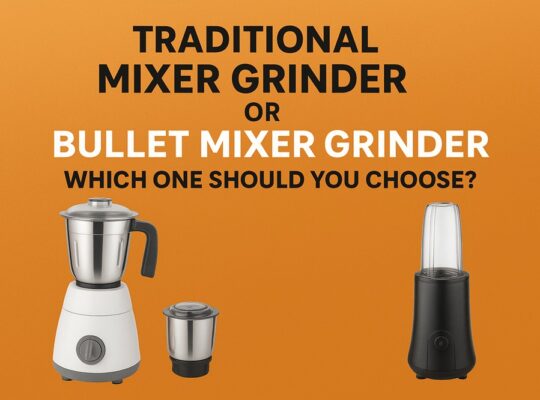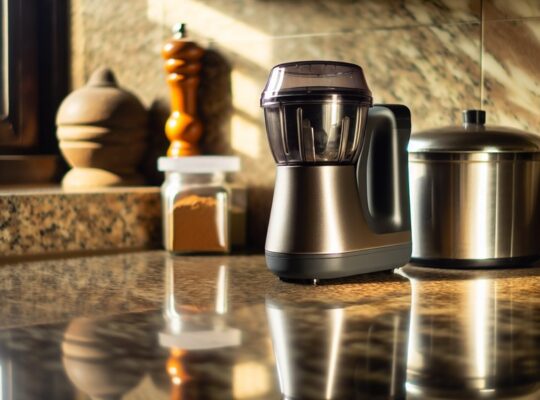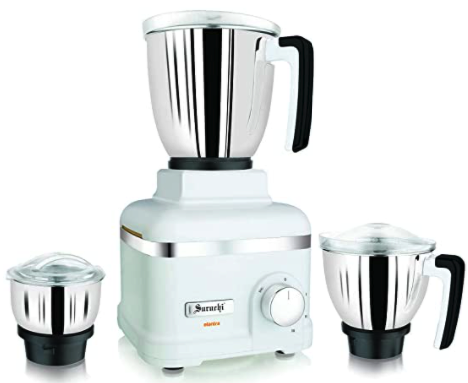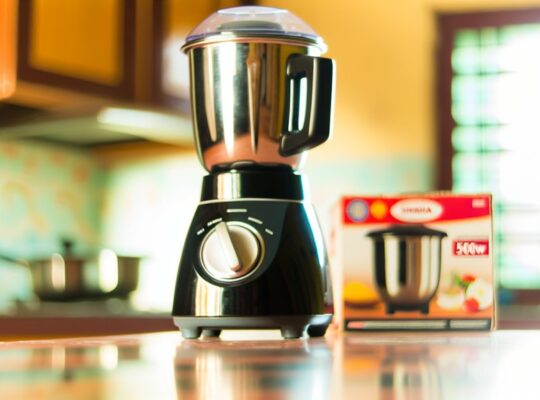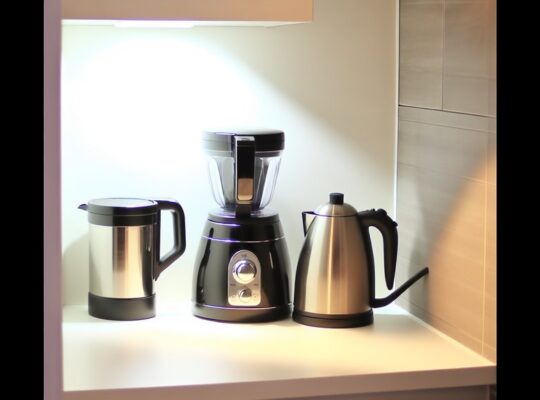When I grind idli or dosa batter, I want a motor that stays cool, jars that grab the stones of soaked rice and urad evenly, and controls that keep starch release in check. A 750W+ unit with a broad, stainless wet jar and reliable pulse makes the difference between airy fermentation and gummy pucks. I’ve tested models that nail texture and cleanup—some even tame noise—yet only a few truly stand out. Here’s how I pick them.
Key Takeaways
- Choose a 550–750W torquey motor with copper windings and thermal overload protection for cool, steady wet grinding.
- Prefer a true wet-grinding jar: broad base, ridged stainless surface, secure lockable lid, and double-lipped gasket.
- Top picks: Panasonic MX-AC400, Sujata Dynamix, and Preethi Zodiac for consistent idli/dosa batter performance.
- Use pulsing starts, then short steady cycles (20–45 seconds) with rests to manage heat and develop fluffy texture.
- Keep jars under half full, use chilled water, grind urad first then rice, and avoid exceeding the max fill line.
Key Features That Matter for Perfect Batter
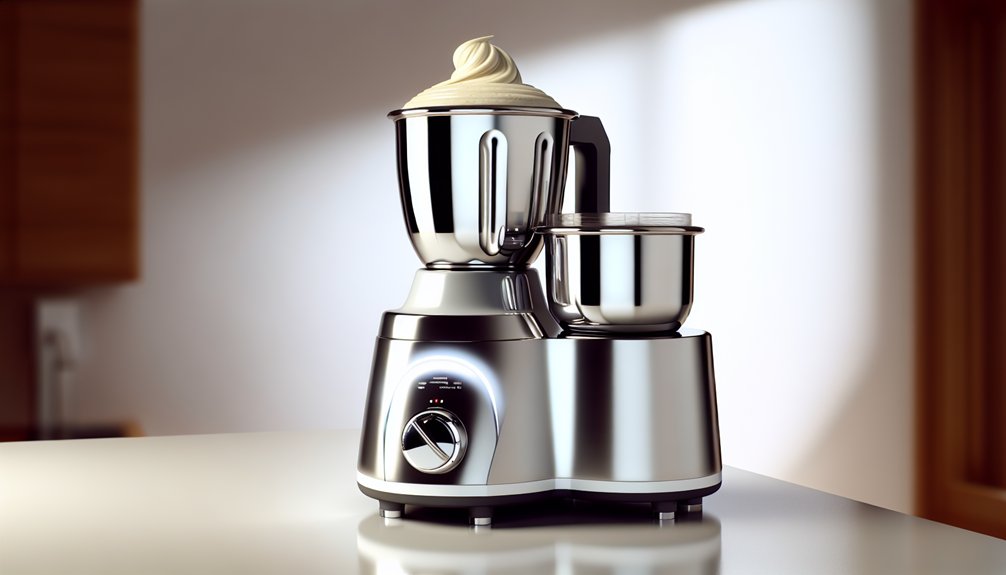
Texture is everything. For idli and dosa, I look for a grinder that can coax silky rice and fluffy urad dal without heating them. A powerful motor (750W+) with overload protection keeps torque steady while staying safe. I want a true wet-grinding jar: broad base, stone-like or ridged stainless-steel grinding surface, and a secure lid with a splash guard. Consistent speed control matters—low RPM for soaking-smooth breakdown, pulse to finish. Balanced blades with a gentle curvature lift batter without aerating excessively.
Cooling is critical; thermal cut-off and ventilation prevent warmth that can compromise fermentation. I prefer lockable lids, non-slip feet, and food-safe, BPA-free materials. Finally, a spout-free rim and easy-to-clean, rounded interiors reduce contamination risk and preserve the batter’s delicate microbiome.
From current options, models with conical stones and shock-proof ABS bodies—like top-rated 150W wet grinders—excel at producing cool, fluffy batter without overheating.
Top Mixer Grinders for Wet Grinding Performance
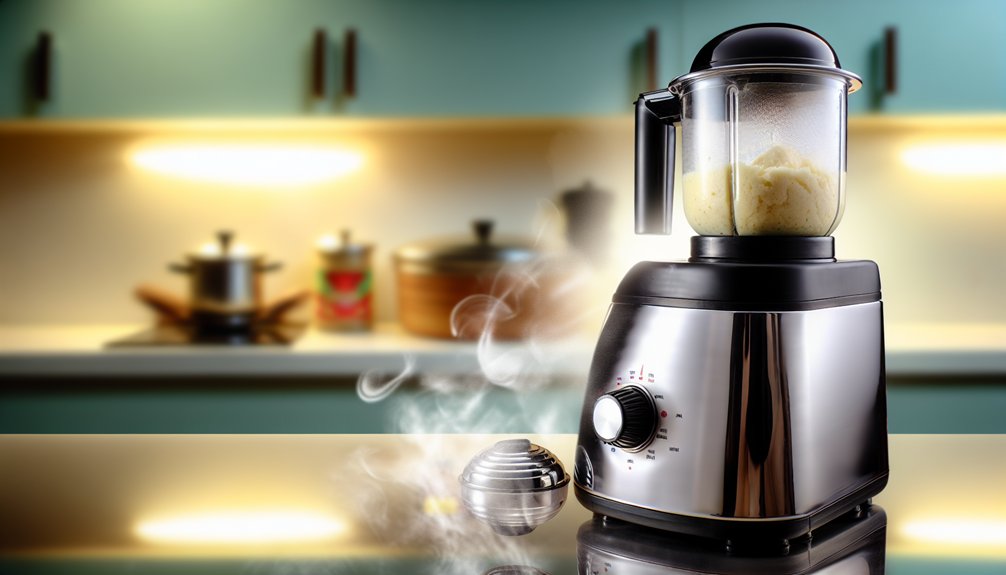
With those performance cues in mind, here are the mixer grinders that actually grind soaked rice and urad the way we want—silky, cool, and uniform. I trust three standouts for wet performance: Panasonic MX-AC400, Sujata Dynamix, and Preethi Zodiac. Each ships with a sturdy, lockable wet-jar and a stone-finish or serrated blade that pulls batter down instead of whipping air in.
I look for jars with a broad base, tight gaskets, and a true wet-grind profile. These three let me pulse to start, then run short, steady cycles so the rice releases starch while urad fluffs without tearing. The lids vent gently, and the couplers grip without wobble. I never overfill past the max mark, keep hands dry, and always seat lids before engaging.
Sujata’s 900-watt motor with 22000 rpm delivers stable torque for consistent wet grinding in the Dynamix and other models.
Motor Power, Heat Management, and Noise Levels
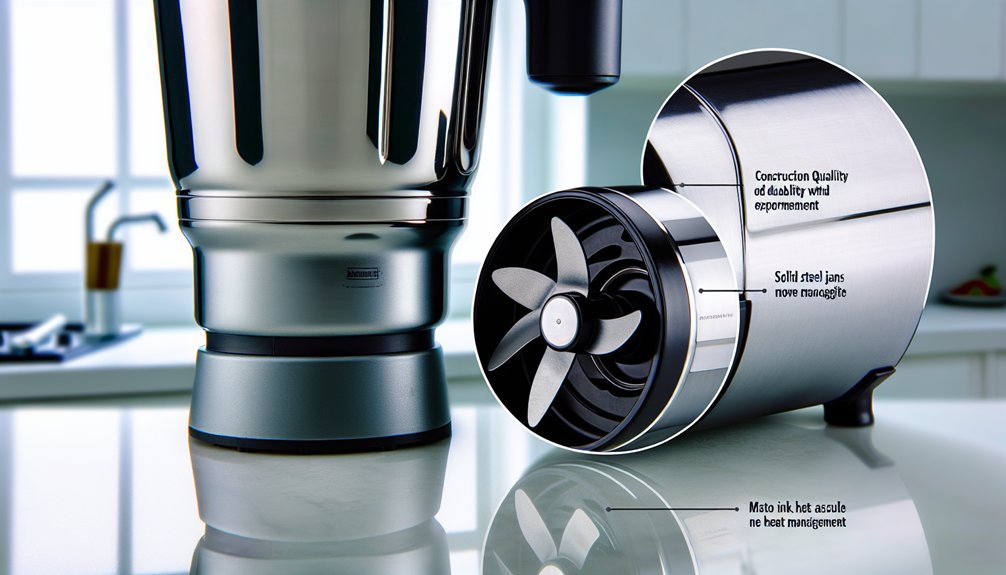
Although brute wattage looks tempting on the box, I prioritize a torquey 550–750W motor that stays cool over long, wet cycles. High torque at moderate wattage grinds soaked urad and rice smoothly without scorching starches or thinning batter. I look for copper windings, thermal overload protection, and a ventilated housing; these keep temperatures safe and preserve motor life.
For heat management, I pulse in 30–45 second bursts with short rests. If the housing feels hot or batter warms, I stop. Cooler batter retains airiness, giving better fermentation and softer idlis.
Noise matters in small kitchens. I prefer balanced motors with rubber feet and a stable base. A steady hum is fine; harsh rattling isn’t. Always secure lids, keep hands clear, and never block vents.
For long, wet grinding sessions, models with overload protection and anti-slip feet from trusted brands improve safety and stability while preserving motor life.
Jar Types, Build Quality, and Cleaning Ease
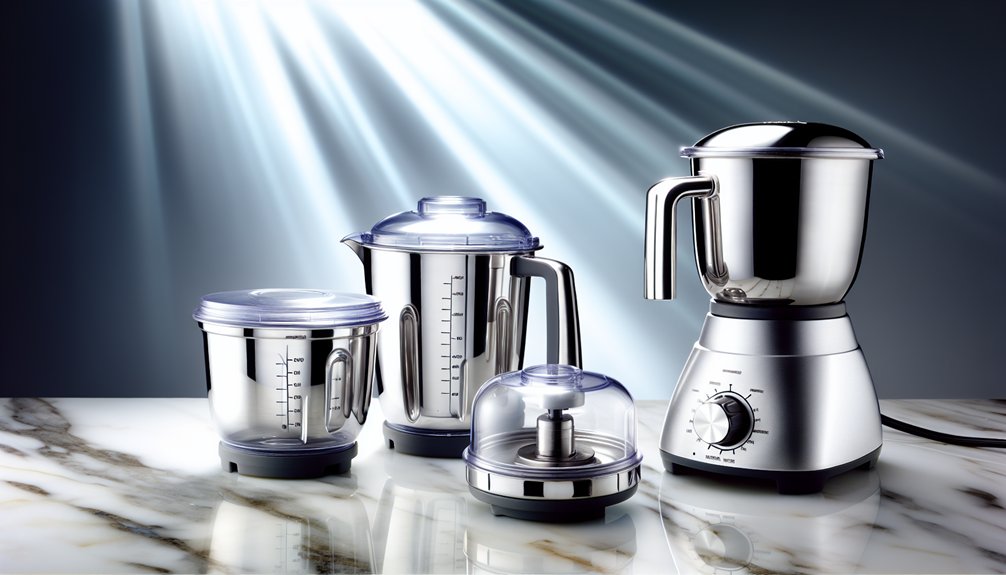
Power’s only half the story; the right jars and build make or break batter. I reach for a tall, deep wet-grinding jar with a broad base: it pulls soaked urad and rice toward the stones or blades without aerating too much. Stainless steel resists odors and handles turmeric stains; transparent lids help me monitor texture without repeated opening. I want a firm, double-lipped silicone gasket—leakproof, BPA-free, and easy to seat.
A heavy, balanced body with anti-skid feet keeps the unit stable during long grinds. Metal couplers outlast plastic and keep alignment true, reducing heat and abrasion. For cleaning, I look for wide mouths, minimal crevices, and detachable blades with a safety-friendly spanner. I avoid abrasive scrubbers; warm soapy water, a soft brush, and thorough drying prevent rust and microbial growth.
For consistent idli and dosa batter, choose a mixer with a 100% copper motor, as Usha’s models highlight, to ensure smooth, fine grinding with better durability during long wet-grinds.
Tips for Small and Large Batch Grinding
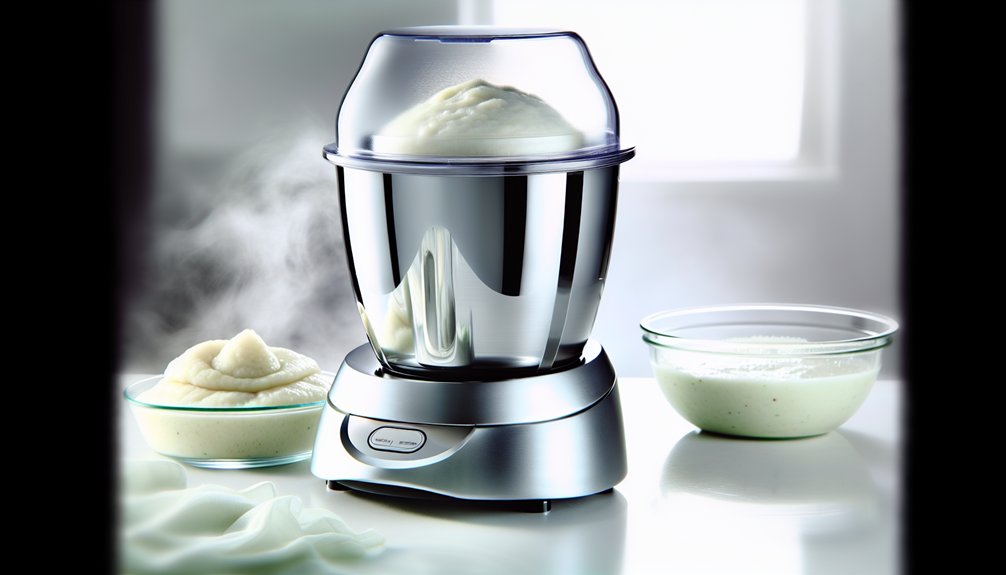
Two batch sizes demand two mindsets. For small batches (1–2 cups soaked grains), I keep the jar under half full, add ice-cold water in teaspoons, and pulse first to seat the stones. I scrape down, then grind in 20–30 second bursts, letting the motor rest. I aim for a silky, pourable batter that ribbons off a spoon. If heat rises, I stop; warm batter turns pasty and ferments poorly.
For large batches, I divide into stages: urad first, then rice. I never exceed the max line; overfilling stresses bearings and raises heat. I use chilled water, add salt later, and keep a towel over the lid for splatter control, never my hand. Between cycles, I open the jar, vent steam, and give the motor a cool-down. Additionally, choose a mixer grinder with overload protection and adequate motor power, as these safety features help prevent overheating and ensure consistent performance during long grinding sessions.
Frequently Asked Questions
Can I Use a Mixer Grinder Instead of a Wet Grinder for Fermentation?
Yes, but I’d keep batters cool and slightly coarse. I soak well, grind in small batches with ice water, avoid overheating, add salt after grinding, and ferment in a clean, warm, ventilated spot using non-reactive containers.
How to Prevent Batter Sticking to Jar Walls During Grinding?
I prevent sticking by chilling the jar, adding water gradually, and pulsing first. I scrape down with a safe silicone spatula, then grind in short bursts. Don’t overload; add oil-free ice cubes sparingly to keep batter cool and mobile.
Which Brands Offer the Best After-Sales Service for Jars and Blades?
Sujata, Preethi, and Panasonic consistently deliver the best after-sales support for jars and blades. I prioritize quick seal replacements, shaft safety checks, and blade balancing. You’ll get responsive service centers, easy spares, and reliable warranty honor—crucial for safe, consistent grinding.
Are There Warranty Implications When Grinding Soaked Rice and Urad Dal?
Yes—most warranties allow wet grinding soaked rice and urad dal, but misuse applies. I’d avoid overloading, overheating, or running dry. Use recommended water ratios, pulse to start, rest the motor, and clean seals to prevent ingress.
What Voltage Stabilizer or Inverter Is Suitable for Continuous Wet Grinding?
Use a servo-controlled voltage stabilizer (3–5 kVA) or a pure sine wave inverter (1.5–2 kVA) with 25–40A surge. I’d guarantee AVR, low/high cutoff, overload protection, and independent circuit—continuous wet grinding stresses motors.
